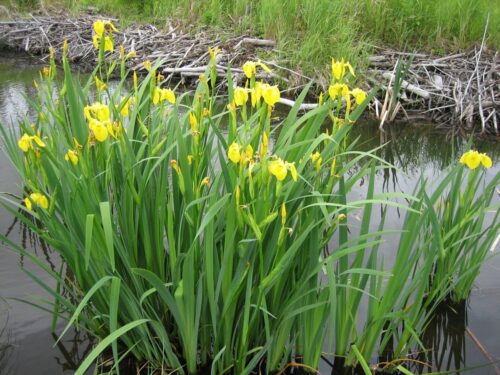- Home
- How to create a pond or
Whether you live in the country, city or suburbs, there's plenty of scope for self-building a traditional pond

POND POWER
You can put a conventional pond anywhere that you can access it on all sides that are not truly boggy. Can you reach the spot with the necessary power for aerating pumps, filters, UV filters or lighting? Larger waterfalls moving 1000s of litres per hour may require a soil filter. Some waterfalls will turn over their entire capacity of water every hour. For less elaborate setups, wireless solar-powered pumps and small (50cm) fountains, alone or matched to a battery to take them through the night, can remove the need for any mains help.

SITE AND SHAPE
To lay out the pond before slipping disc, use a garden hose or trickling white sand to site the pond in semi-shade (too much sun will just crank up your algae count). If you’re looking for something urbane; a straight-sided pond, set into the ground or more typically with raised walls can form part of stunning, hard landscaping. Generally, if you want to indicate natural features, rambling curves are key. Be wary of areas where there may be any undesirable run-off into your pond.

SIZING
The size and depth of the pond will be dictated first by the types and number of any fish you might include. Dedicated wildlife ponds are best left fish-free. If you’re determined on specimen koi carp (my father has some scaly old pets as long as my leg) a pond of 1.5m-2m will be predetermined to allow them to go deep enough to keep warm and semi-hibernate in winter. Don’t over-populate. Once they grow to specimen size and start breeding, apart from unpleasant crowding, the pump and filters will be thrumming loudly to keep the water clean.

DIGGING OUT
A flat spade and a strong back will suffice for a simple pond without blockwork. You will want to keep the sod and soil to create surrounding features, perhaps a site for a waterfall, a bank around the pond or shelving at the water’s edge. Ensure there are no utility lines set under the lawn or drainage pipes in your way before cleaving the ground. Remove stones that could pierce the liner once heavy with water. Use a long piece of wood and a spirit level to check the pond is level, side to side on completion. Another solution to raise the sides? Consider creosote-free timber sleepers bolted together and fully lined.

LINERS
With the site dug out correctly, and presuming we’re using a flexible quality butyl liner you will need: soft underlay, a quantity of soft sand, edging material and as much familiar support as you can beg for.
The most recommended liner to create your pond is the HDRPE material. A thick, durable, HDRPE liner, is a versatile material that is used widely across all applications. HDRPE can also be used in a multitude of secondary containments, pond linings, and water containment projects. HDRPE is best used as an exposed lining material and has the UV resistance required for many years of outstanding service.

PLANTING
Together with pumps and filters to move, oxygenate and crucially, clean the water, the right plants offer a passive solution that not only look great but that will save you work. Perennial marginals can really help to pull damaging nitrates out of the water. Don’t overstock or it can unbalance the ecology of the pond. They can be introduced in multiple ways suited to their natural level in the water, set into low walled planting pockets and even segue onto a bog garden with graceful sentries like Lobelia cardinalis and flag iris/Iris pseudacorus. Baskets filled with aquatic compost allow plants to be neatly contained and moved when required.

